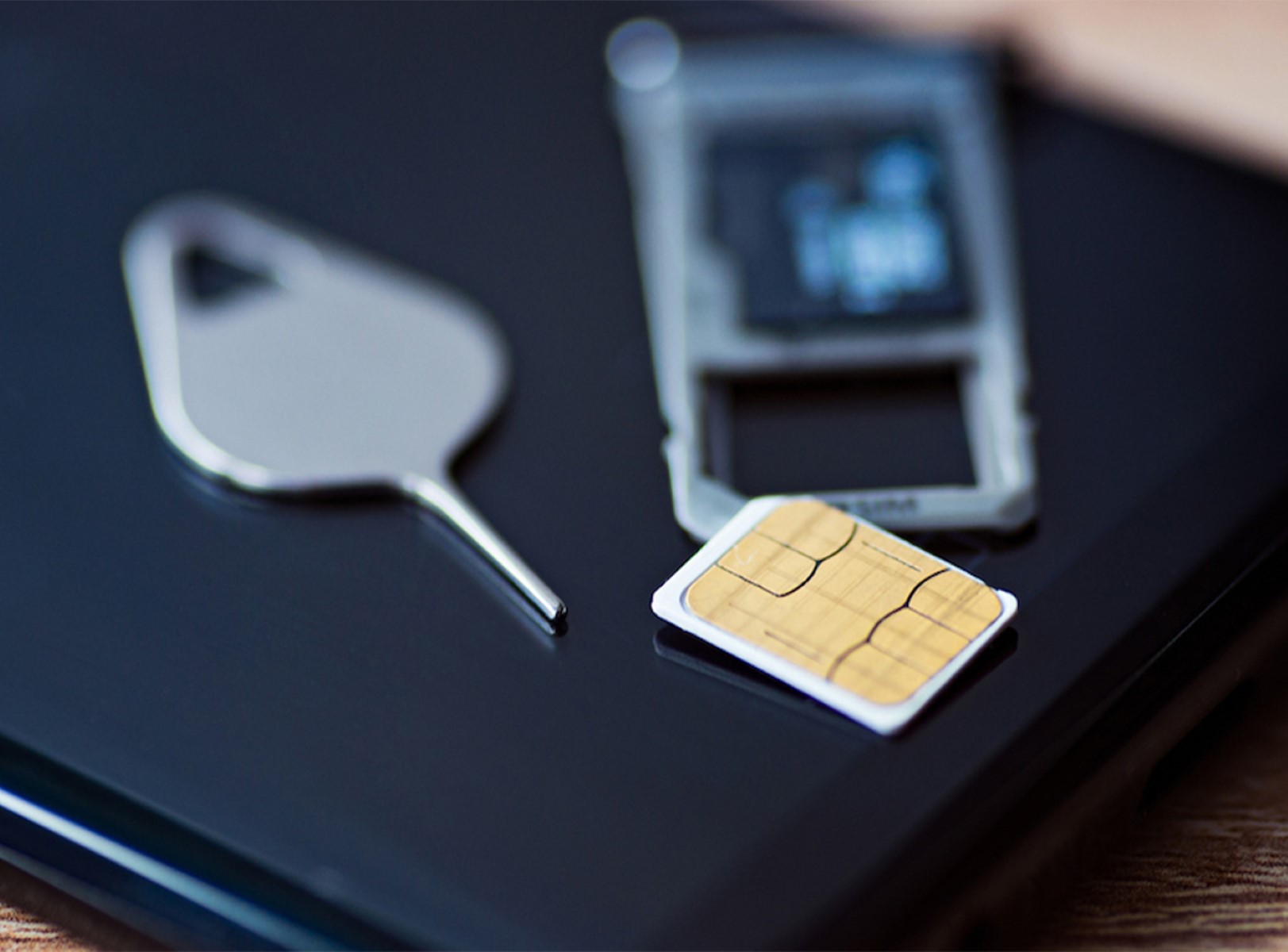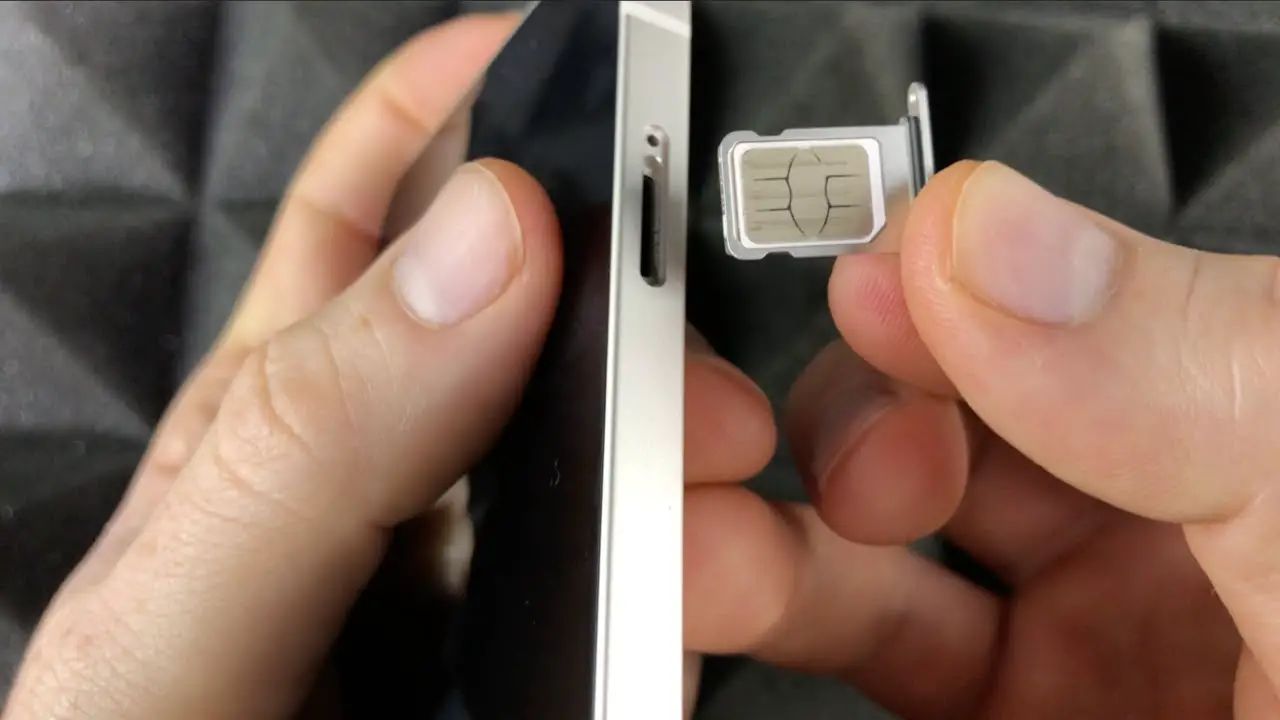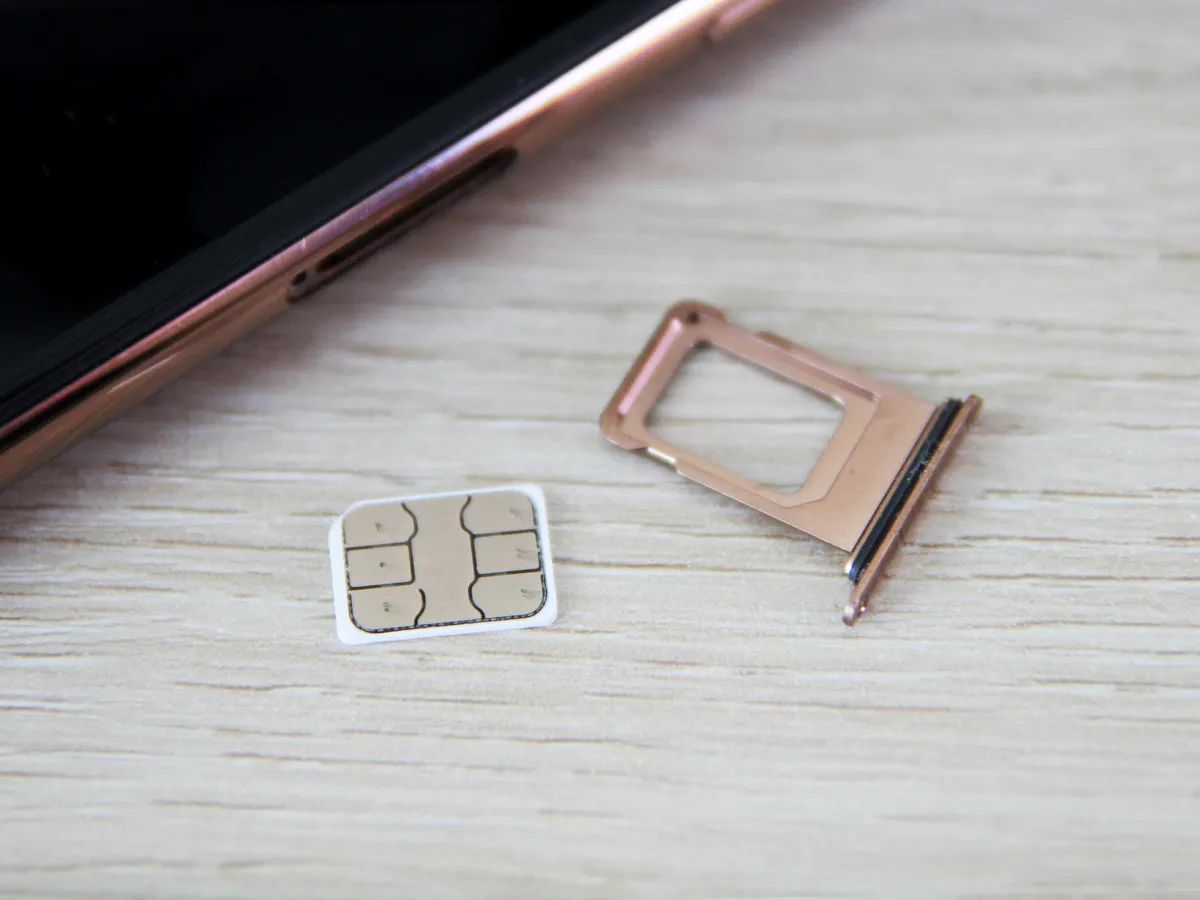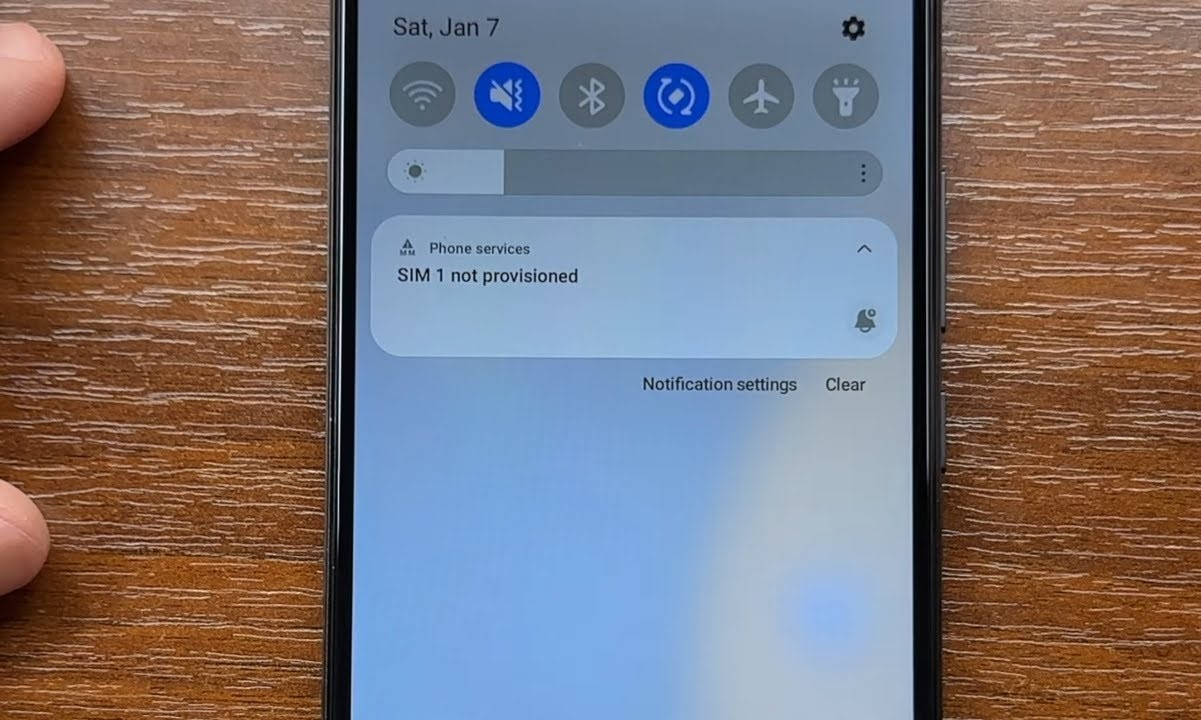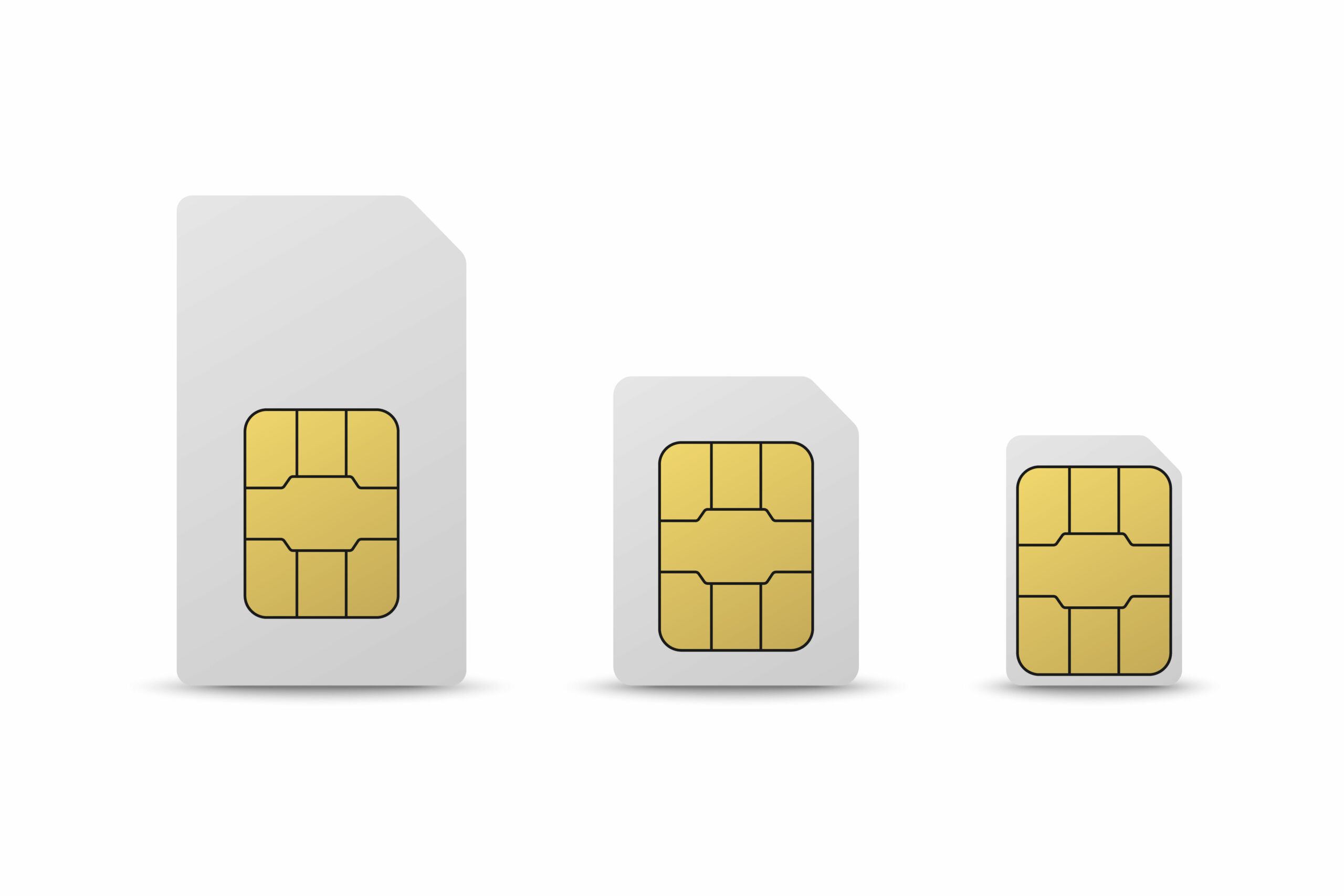Introduction
A SIM card, short for Subscriber Identity Module, is a small but crucial component of a mobile device. It serves as the link between your device and your mobile network, enabling you to make calls, send text messages, and access mobile data. However, there are times when a SIM card may cease to function, leaving you disconnected from the digital world. This can be frustrating, especially when you rely on your mobile device for communication, work, or entertainment.
Understanding the potential reasons for a non-working SIM card is essential for troubleshooting and resolving the issue. From physical damage to network coverage problems, there are several factors that can contribute to a malfunctioning SIM card. By identifying the root cause, you can take the necessary steps to restore connectivity and get back to using your mobile device seamlessly.
In this comprehensive guide, we will explore the common reasons why a SIM card may stop functioning and provide practical troubleshooting steps to address the issue. Whether you're experiencing frequent call drops, an inability to send text messages, or a complete loss of mobile data connectivity, this guide will equip you with the knowledge to diagnose and resolve the problem. By the end of this article, you'll be empowered to tackle SIM card issues with confidence, ensuring that you stay connected wherever you go.
Let's delve into the potential causes of a non-working SIM card and uncover the solutions to restore seamless connectivity to your mobile device.
Check for Physical Damage
Physical damage to a SIM card can result in connectivity issues and hinder its ability to function properly. Therefore, it's essential to carefully inspect the SIM card and its slot for any signs of damage. Start by removing the SIM card from its slot and examining it closely. Look for visible scratches, dents, or other forms of physical damage. Additionally, check the SIM card slot in your device for any foreign objects, debris, or damage that may be obstructing the proper insertion of the card.
If you notice any damage to the SIM card, such as a crack or a bent corner, it's likely that this is the root cause of the connectivity problem. In such cases, replacing the damaged SIM card with a new one is the most effective solution. Most mobile operators provide SIM card replacement services, allowing you to obtain a new card and transfer your existing mobile number and plan to the new SIM card seamlessly.
Even if the SIM card appears undamaged, it's important to handle it with care during the inspection process. Avoid touching the metallic contacts on the SIM card, as oil and dirt from your fingers can interfere with its functionality. Similarly, when reinserting the SIM card into your device, ensure that it is properly aligned with the slot and gently secured in place to prevent any potential damage.
In some cases, physical damage may not be immediately visible, especially if it involves the internal components of the SIM card. If you suspect that the SIM card may be damaged internally, consider testing it in another compatible device to determine if the issue persists. If the SIM card functions normally in a different device, the problem may be related to the SIM card slot or other hardware components in your original device.
By thoroughly checking for physical damage and handling the SIM card with care, you can effectively troubleshoot potential connectivity issues stemming from external damage. This proactive approach allows you to identify and address physical damage as a potential cause of a non-working SIM card, paving the way for a successful resolution and the restoration of seamless connectivity to your mobile device.
Verify Network Coverage
Ensuring adequate network coverage is paramount when troubleshooting a non-working SIM card. Despite the advancements in mobile technology, network coverage can still vary based on geographical location, network infrastructure, and environmental factors. When experiencing connectivity issues, it's essential to verify the strength and availability of the mobile network in your current location.
Begin by checking the signal strength indicator on your mobile device. This visual representation of the network signal can provide valuable insights into the quality of the network coverage in your vicinity. A strong signal, indicated by a higher number of bars or a clear signal icon, typically signifies robust network coverage, while a weak or fluctuating signal may indicate potential coverage limitations.
If the signal strength appears weak or fluctuates unpredictably, consider moving to a different location, preferably an open area with minimal obstructions. Physical barriers such as buildings, tunnels, and dense foliage can obstruct the transmission of network signals, leading to connectivity issues. By relocating to a more open and unobstructed space, you can potentially improve the reception of the network signal and ascertain whether the connectivity issue is related to network coverage.
In addition to physical relocation, consider using the network coverage map provided by your mobile operator. These maps offer a comprehensive overview of the network coverage in specific areas, allowing you to identify regions with strong, moderate, or limited network connectivity. By consulting the coverage map, you can gain insights into the expected network performance in different locations, enabling you to make informed decisions about your current and future connectivity needs.
Furthermore, technological advancements such as Wi-Fi calling and Voice over LTE (VoLTE) can supplement traditional network coverage, especially in areas with limited cellular reception. These features leverage Wi-Fi networks and high-speed data connections to enable voice calls and text messaging, providing an alternative communication method when traditional cellular coverage is inadequate.
By verifying network coverage and exploring alternative connectivity options, you can effectively diagnose and address potential network-related issues affecting your SIM card. This proactive approach empowers you to make informed decisions about your mobile connectivity and take the necessary steps to mitigate coverage limitations, ultimately ensuring a seamless and reliable mobile experience.
In summary, verifying network coverage is a critical step in troubleshooting a non-working SIM card, as it provides valuable insights into the quality and availability of the mobile network. By assessing signal strength, exploring alternative connectivity options, and leveraging network coverage maps, you can make informed decisions to address potential coverage limitations and restore seamless connectivity to your mobile device.
Restart Your Device
Restarting your mobile device is a simple yet effective troubleshooting step that can help resolve a wide range of connectivity issues, including those related to a non-working SIM card. When your device is powered on for extended periods, temporary software glitches or network communication errors may occur, impacting the functionality of the SIM card and other essential components. Restarting the device allows it to undergo a complete power cycle, which can clear these temporary issues and restore normal operation.
To restart your device, begin by pressing and holding the power button until the power-off or restart menu appears on the screen. Select the option to restart the device, and allow it to power down completely before turning it back on. Alternatively, if your device has a removable battery, you can power it off by removing the battery, waiting for a few seconds, and then reinserting the battery and powering the device back on.
Once the device has restarted, observe its behavior and check for improvements in SIM card functionality. In many cases, a simple restart can rectify temporary network communication errors, software glitches, and other transient issues that may be affecting the SIM card's performance. Additionally, the restart process can help refresh the device's connection to the mobile network, potentially resolving connectivity issues and restoring seamless operation.
It's important to note that restarting your device is a recommended troubleshooting step for various mobile connectivity issues, not just those related to the SIM card. Whether you're experiencing call quality issues, slow data speeds, or difficulty sending text messages, a device restart can serve as an initial diagnostic step to address these concerns.
In summary, restarting your mobile device is a fundamental troubleshooting measure that can effectively address temporary software and network communication issues impacting the functionality of the SIM card. By performing a device restart, you can initiate a complete power cycle, potentially resolving connectivity issues and restoring seamless operation to your mobile device. This simple yet impactful step empowers you to proactively address connectivity concerns and ensure a reliable and uninterrupted mobile experience.
Update Your Device Software
Updating your device software is a crucial step in troubleshooting a non-working SIM card. Software updates, also known as firmware updates or system updates, are designed to enhance the performance, security, and compatibility of your mobile device. By ensuring that your device is running the latest software version provided by the manufacturer, you can address potential software-related issues that may be affecting the functionality of the SIM card and other essential components.
To update your device software, navigate to the settings menu on your mobile device and look for the "System" or "Software Update" option. Depending on your device manufacturer and model, the exact location of the software update option may vary. Once you locate the update section, initiate a manual check for available updates. If a new software version is available, follow the on-screen prompts to download and install the update.
Device software updates often include bug fixes, security patches, and performance enhancements that can positively impact the overall functionality of the device, including its compatibility with SIM cards and mobile networks. By keeping your device software up to date, you can mitigate potential software-related issues that may be contributing to the non-working SIM card problem.
In addition to addressing existing software issues, device software updates may also introduce optimizations and improvements that enhance the device's compatibility with the latest network technologies and protocols. As mobile networks evolve and introduce new features, ensuring that your device software is up to date is essential for maintaining seamless connectivity and leveraging the full capabilities of your SIM card and mobile network.
It's important to note that device software updates are typically provided by the device manufacturer and may be distributed over-the-air (OTA) or through dedicated software update tools. Regularly checking for and installing available software updates is a proactive measure that can contribute to the overall reliability and performance of your mobile device, ultimately benefiting the functionality of the SIM card and ensuring a consistent and uninterrupted mobile experience.
In summary, updating your device software is a fundamental step in troubleshooting a non-working SIM card. By staying current with the latest software versions provided by the manufacturer, you can address software-related issues, enhance compatibility with mobile networks, and optimize the functionality of your SIM card. This proactive approach empowers you to maintain a reliable and seamless mobile experience, ensuring that your device operates at its full potential.
Contact Your Mobile Operator
Contacting your mobile operator is a pivotal step in troubleshooting a non-working SIM card. Mobile operators, also known as wireless carriers or network providers, play a central role in ensuring the seamless operation of your mobile device and its connectivity to the mobile network. When experiencing persistent issues with your SIM card, reaching out to your mobile operator can provide valuable insights, support, and solutions to address the underlying concerns.
Initiating contact with your mobile operator can be done through various channels, including customer service hotlines, online chat support, email communication, and physical retail locations. When reaching out to your mobile operator, it's important to have essential details readily available, such as your mobile number, account information, and specific details about the SIM card issue you're encountering. This information can expedite the troubleshooting process and enable the customer support team to provide targeted assistance.
Upon contacting your mobile operator, you may be guided through a series of troubleshooting steps tailored to address SIM card-related issues. Customer support representatives are equipped to provide technical guidance, perform remote diagnostics, and escalate the matter to specialized support teams if necessary. Additionally, they can verify the status of your mobile account, including any potential service limitations or account-related issues that may impact SIM card functionality.
In some cases, your mobile operator may remotely re-provision the SIM card, refresh network settings, or initiate diagnostic tests to identify and resolve the underlying connectivity issues. These proactive measures aim to restore seamless functionality to your SIM card and ensure that you can fully utilize the services provided by your mobile operator.
Furthermore, contacting your mobile operator allows you to inquire about potential network outages, service disruptions, or maintenance activities that may be affecting the overall network performance. By staying informed about network-related events, you can gain clarity on whether the non-working SIM card issue is attributable to broader network challenges, enabling you to adjust your connectivity expectations accordingly.
For more complex issues, your mobile operator may offer to replace the SIM card or provide guidance on obtaining a new SIM card from their retail outlets or authorized partners. This proactive approach ensures that you have access to a functional SIM card, preserving your ability to stay connected and utilize mobile services without interruption.
In summary, contacting your mobile operator is a proactive and essential step in troubleshooting a non-working SIM card. By engaging with the customer support resources provided by your mobile operator, you can access technical assistance, account verification, and potential solutions tailored to address SIM card-related issues. This collaborative approach empowers you to resolve connectivity concerns, restore seamless operation to your mobile device, and maintain a reliable and uninterrupted mobile experience.
Replace Your SIM Card
If all previous troubleshooting steps have been exhausted and the non-working SIM card issue persists, replacing the SIM card is a recommended course of action. Over time, SIM cards can experience wear and tear, leading to diminished performance and connectivity issues. Additionally, physical damage or internal faults may compromise the functionality of the SIM card, necessitating a replacement to restore seamless operation to your mobile device.
When considering the replacement of your SIM card, it's important to first contact your mobile operator to initiate the process. Most mobile operators offer SIM card replacement services either through their customer service channels or at their retail outlets. By reaching out to your mobile operator, you can inquire about the replacement procedure, associated costs (if any), and the documentation required to facilitate the replacement.
Upon obtaining the necessary information, you can proceed with obtaining a new SIM card from your mobile operator's designated location. When visiting a retail outlet or service center, be prepared to provide valid identification and account verification details as per the operator's requirements. This ensures a smooth and secure transition to the new SIM card while maintaining the integrity of your mobile account and services.
Once you have obtained the new SIM card, it's essential to follow the activation and transfer process outlined by your mobile operator. This typically involves activating the new SIM card, transferring your existing mobile number, contacts, and plan details to the new card, and ensuring that it is properly inserted into your device. Many mobile operators provide step-by-step guidance or self-service options to facilitate the seamless transition to the new SIM card.
After replacing the SIM card, observe the functionality of your mobile device and verify that the connectivity issues have been resolved. In most cases, a new SIM card can effectively address persistent non-working SIM card issues, allowing you to regain seamless access to voice calls, text messaging, and mobile data services.
By proactively replacing your SIM card, you can mitigate the impact of physical damage, internal faults, or wear and tear on the functionality of the SIM card. This proactive measure ensures that you can continue to stay connected and enjoy uninterrupted mobile services, ultimately enhancing your overall mobile experience.
In summary, replacing your SIM card is a proactive and effective step to address persistent non-working SIM card issues. By collaborating with your mobile operator to obtain a new SIM card and following the activation process, you can restore seamless connectivity to your mobile device, ensuring reliable access to essential mobile services.







